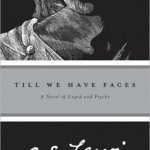Editor’s Note: November 22, 2013, will mark the fiftieth anniversary of C. S. Lewis’s death. On that day, he will be given a place in Westminster Abbey’s renowned Poet’s Corner. In commemoration of this event, all this week Christ and Pop Culture contributors will be writing about the works by C. S. Lewis that have been most personally significant to them.
Given how much conflict there is over the interpretation of “The Shoddy Lands” and what that means about Lewis’s character (being often read as corollary evidence against the author in the related case of The Problem of Susan), it feels strange to say that this has been the most affecting and rewarding of his works in the trajectory of my life. It’s also a touch strange to say that the effect is a bit tangential to Lewis’s purpose in the story, whether one takes his side or not.
In the course of his story, Lewis deposits his narrator (and probably avatar) within a world representing the things a particular young woman cares about. Trees and grass are spongy and ill-defined because she doesn’t care about them or their natural splendor. People as well are indistinct smudges, save for men of a particular type whose faces are radiant and women who remain blurs of perception save for their clothing and accoutrements, which are crisp. Likewise jewelry and fashionable gowns are beautifully wrought in this world of hers. Centrally, the narrator finds an enormous, perfected version of the woman, lounging in swimwear (and then nude), a monument to her bloated, self-serving ego. The narrator then, having returned to the real world, is both struck by how terrible and shallow the world of her affections is and how fearful he would be of some stranger being able to witness his own trifling affections through such an unguarded mechanism.
The lesson is that we should be mindful of the things, people, and ideas in which we invest ourselves. And that is not the lesson that I took for myself. Rather, I was dead fascinated by the idea that I might see some things distinctly and other things as ghosts. In my reapplication of Lewis’s idea, the shoddy things were the things that I did not pay attention to—the things I saw without really seeing. Did I really know what a horse looked like? Grass? A mountain? A woman? My interest in the question of what my own shoddy lands would look like was born of my interests as an artist, but it grew beyond that. Since reading “The Shoddy Lands,” I came to study more conspicuously my surroundings with an eye toward actually knowing the world I inhabited. And in doing so, I also came to appreciate that world’s beauty a bit more. Even parts and pieces so unappealing as, say, sludge take on a bit of aesthetic wonder when studied with an eye toward reproduction. Without doubt, my having read Lewis’s most controversial story (some have described it as his most vulgar) has built in me a stronger, more thorough, and well-rounded appreciation for the world God has crafted.
Photo via Barnes and Noble.










